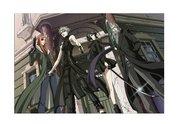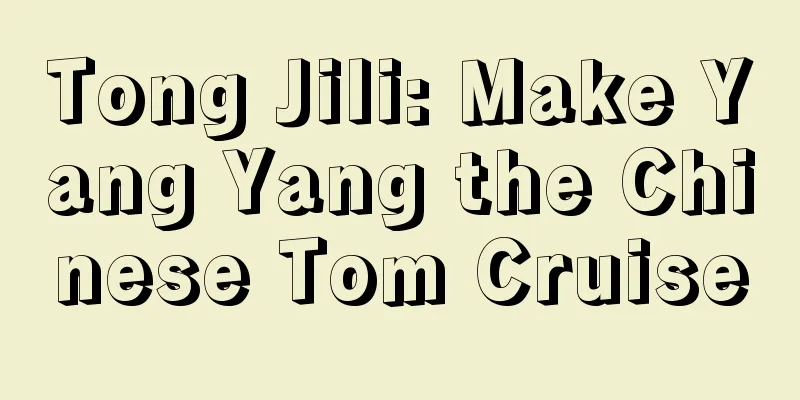Review of "Duckling": A moving story and charming characters

"The Duckling": The appeal of Japanese animation based on Hans Christian Andersen's fairy tale■Overview of the workThe Ugly Duckling is a Japanese animated film released in 1932. It was released in theaters and was inspired by Hans Christian Andersen's fairy tale The Ugly Duckling. It was released in September 1932, is 19 minutes long, and has one episode. It was directed by Yasuji Murata and produced by Yokohama Cinema Shokai. ■ Story■ Story A baby swan born inside a duck's egg faces various persecutions. However, he grows up with the help of the friendship between a cat and a chicken who live in a villa, but when autumn comes, he begins to think about the parents who gave birth to him. ■Explanation■ExplanationThis is a video adaptation of an Andersen fairy tale, and although it is a foreign story, the narration and characters are completely Japanese. A talkie version was later produced, but in the talkie, live action scenes of a girl reading Andersen's book were added at the beginning and end, and the title text in the middle was removed. ■ Main staff■ Main staffOriginal story and screenplay by Chuzo Aochi ■ Background and production process of the work"Duckling" occupies an important place in the Japanese animation industry in the early 1930s. This was a time of transition from silent films to talkies, and new forms of expression were sought along with technological advances. In this work, director Yasuji Murata gives a Japanese twist to Andersen's fairy tale, successfully achieving both visual appeal and narrative content. The film was produced by Yokohama Cinema Shokai, a company that introduced cutting-edge animation technology for the time and produced many works. "Duckling" was one of them, and the creativity of Chuzo Aochi, who was in charge of the original story and adaptation, had a major influence on the film. ■ Story details and charactersThe story begins with a baby swan born from a duck egg realizing that it is different from other ducks and is persecuted by those around it. The baby swan sets out on a journey to understand who it is. Along the way, the baby swan meets a cat and a chicken, and with their help, he grows up. In the autumn, there is a moving scene in which the baby swan imagines the parents who gave birth to him and reaffirms his identity. The character designs are typical of Japanese animation of the time. The baby swan is drawn with a cuteness to it, and the friendship between the cat and the chicken is portrayed with a warm touch. The backgrounds and scenery are also carefully drawn in great detail, making for a visually stunning work. ■ Technical features"Duckling" was made as a silent film. There was no music or sound effects, and the story needed to be told only with images and subtitles. Therefore, the director and staff paid particular attention to the depiction of the movements, expressions, and backgrounds in the images, making the most of visual information. In particular, the scenes in which the baby swan grows up and the autumn landscapes show technical ingenuity. When the talkie version was later produced, live-action scenes of a young girl reading Andersen's book were added before and after the film, adding new elements to the introduction and conclusion of the story. The title text in the middle was also removed, making the story flow more smoothly. These changes show that the way the work was presented has evolved with the advancement of technology. ■ Evaluation and influence of the work"Duckling" was highly praised in the Japanese animation industry at the time. It was loved by many audiences for its Japanese adaptation of Andersen's fairy tale and for its visual beauty. This work also had a major influence on later Japanese animation, and marked the establishment of a style that emphasizes both narrative and visual expression. In particular, the process of the swan's search for his identity and the friendship between the cat and the chicken touched many viewers. These elements became common in later animated works and became important elements that added depth to the story. ■ Recommendations and related works"The Duckling" is an essential work for understanding the history of animation. I highly recommend it to anyone who likes Hans Christian Andersen's fairy tales or has an interest in classic animation, and I also recommend it to anyone who enjoys visual beauty. Related works include "The Little Mermaid" and "The Little Match Girl," which are also based on Hans Christian Andersen's fairy tales. These works also place importance on both narrative and visual expression, and like "The Duckling," they had a major impact on the Japanese animation industry. Furthermore, there are many modern animation works that pursue narrative and visual beauty, such as "Spirited Away" and "Howl's Moving Castle." These works can also be said to have been influenced by "The Duckling." ■ Summary"The Ugly Duckling" is a Japanese animated film released in 1932, and is a Japanese adaptation of Andersen's fairy tale "The Ugly Duckling". It has both visual beauty and narrative, and had a great impact on the Japanese animation industry at the time. The swan's search for his identity and the friendship between the cat and the chicken touched many viewers and influenced later animation works. It is highly recommended for those who like Andersen's fairy tales and are interested in classic animation. It is also recommended for those who enjoy visual beauty. Other related works you should check out include "The Little Mermaid", "The Little Match Girl", "Spirited Away" and "Howl's Moving Castle". |
<<: The appeal and evaluation of "The Three Brave Frogs": A must-read review for anime fans
>>: The appeal and reviews of "Tonpei and Sarukichi": A must-see anime
Recommend
"Deadpool vs. Wolverine" surpasses its predecessor in global box office and is expected to top the global box office list of R-rated movies
According to foreign media The Hollywood Reporter...
Rumor has it that Tom Cruise will play a variant of Iron Man in Avengers: Doomsday
According to foreign media bamsmackpow, Marvel is...
Impressions and reviews of the first episode of "Love Live! Sunshine!!"
Detailed review and recommendation of "Love ...
"Naruto" spin-off novel "Sasuke Retsu" released and will be on sale on August 2
Recently, the cover image and related information...
Voting for the best dish from the popular manga "Maze Rice" is now open
The popular fantasy food adventure manga "La...
A thorough review of Sanrio's classic animations! What is the appeal of the classic best special DVD-BOX?
Sanrio World Masterpiece Animation Classic Best S...
CCTV host talks about the movie "Alita": the heroine is not as sexy as 2B but has big eyes
Today, CCTV host Zhang Tengyue expressed his opin...
The official trailer of "Romantic Killer" is released and will be exclusively premiered on Netflix on October 27
Netflix has released the official trailer for its...
The special trailer for the fourth season of the animation "Haikyuu!!" Blu-ray disc is released and will be released on March 18
The popular manga "Haikyuu!!" has enter...
Sales of the manga "My Favorite Child" doubled after the TV anime aired
Shueisha recently announced that as of May 31, th...
The first trailer of the anime "Higurashi When They Cry" is released and will be broadcast in July 2020
Today (March 21), the classic Japanese anime &quo...
More focus on quality! Future Star Wars movies may be released every 3-4 years
Lucasfilm president Kathleen Kennedy spoke about ...
Theatrical compilation [Part 1] The appeal and evaluation of "Made in Abyss: Journey's Dawn"
The appeal of "Made in Abyss: Journey to the...
Galaxy Express 999: A timeless journey and a moving story reassessed
Galaxy Express 999: An eternal journey and a hymn...
The second phase of the popular TV animation "Jujutsu Kaisen" OP & ED theme song will be broadcast in January
The popular TV animation "Jujutsu Kaisen&quo...









